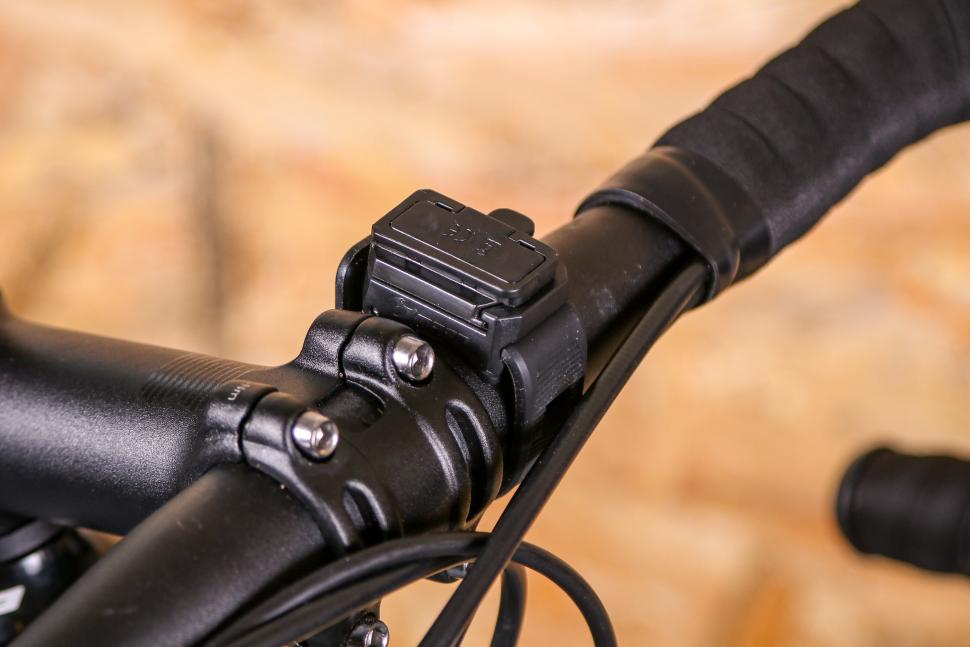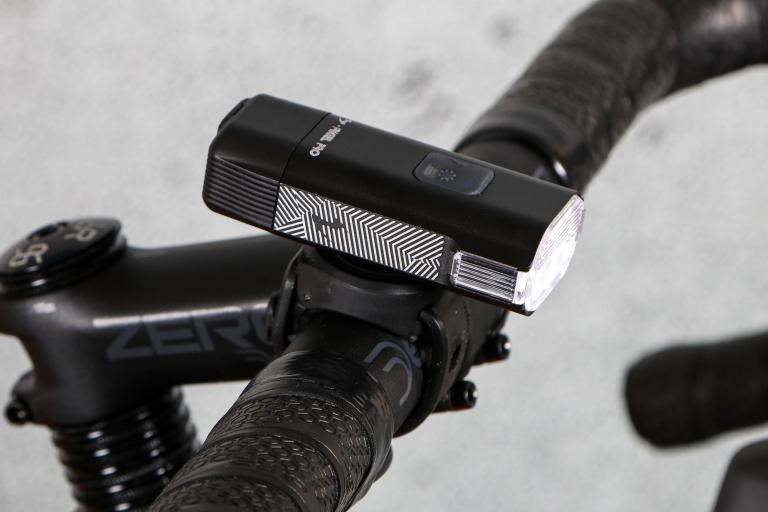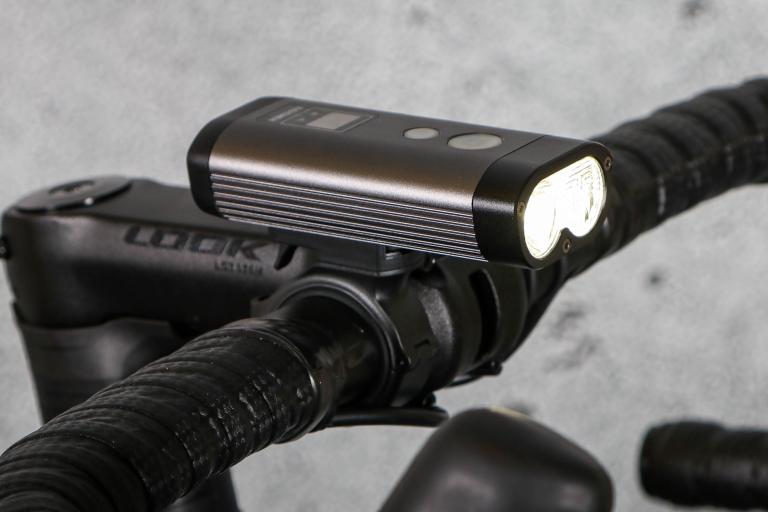- News
- Reviews
- Bikes
- Accessories
- Accessories - misc
- Computer mounts
- Bags
- Bar ends
- Bike bags & cases
- Bottle cages
- Bottles
- Cameras
- Car racks
- Child seats
- Computers
- Glasses
- GPS units
- Helmets
- Lights - front
- Lights - rear
- Lights - sets
- Locks
- Mirrors
- Mudguards
- Racks
- Pumps & CO2 inflators
- Puncture kits
- Reflectives
- Smart watches
- Stands and racks
- Trailers
- Clothing
- Components
- Bar tape & grips
- Bottom brackets
- Brake & gear cables
- Brake & STI levers
- Brake pads & spares
- Brakes
- Cassettes & freewheels
- Chains
- Chainsets & chainrings
- Derailleurs - front
- Derailleurs - rear
- Forks
- Gear levers & shifters
- Groupsets
- Handlebars & extensions
- Headsets
- Hubs
- Inner tubes
- Pedals
- Quick releases & skewers
- Saddles
- Seatposts
- Stems
- Wheels
- Tyres
- Health, fitness and nutrition
- Tools and workshop
- Miscellaneous
- Cross country mountain bikes
- Tubeless valves
- Buyers Guides
- Features
- Forum
- Recommends
- Podcast
review
£54.99
VERDICT:
Versatile and customisable – take time to learn it and you'll love everything except, maybe, the button
Modes for all scenarios
Programmable output
Decent run times
Replaceable battery
Flawed mount
Power button hard to find
Weight:
139g
Contact:
At road.cc every product is thoroughly tested for as long as it takes to get a proper insight into how well it works. Our reviewers are experienced cyclists that we trust to be objective. While we strive to ensure that opinions expressed are backed up by facts, reviews are by their nature an informed opinion, not a definitive verdict. We don't intentionally try to break anything (except locks) but we do try to look for weak points in any design. The overall score is not just an average of the other scores: it reflects both a product's function and value – with value determined by how a product compares with items of similar spec, quality, and price.
What the road.cc scores meanGood scores are more common than bad, because fortunately good products are more common than bad.
- Exceptional
- Excellent
- Very Good
- Good
- Quite good
- Average
- Not so good
- Poor
- Bad
- Appalling
The Moon Vortex 1000 is a great light with settings to satisfy most road riders – it does everything from flooding pitch black lanes to getting you seen around town during the day. The programmable output is great and run times are decent, while the now-replaceable battery enables longer rides at maximum output. Only the clamp and the button niggle, really.
> Find your nearest dealer here
This year's model has had a 200 lumen up-grade over the 2019 version, which should suit those who prefer even dark lanes after work to sitting on an indoor trainer.
In addition to the 1000 lumen Boost mode, there are two more steady modes – 700 lumens and 100 lumens – plus three flashing, one of which is a daylight flash. There's also an SOS mode, which is designated for emergencies only.
Run times in steady modes, just like the outputs, have gone up from those on the 2019 light. The flashing modes have paid the price here, though – while their outputs stay the say, their runtimes have dropped a little.
The light also features Moon's Variable Lumens System, or VLS. This allows you to set the power output of any of the modes (other than Boost or SOS) within a range of 20-700 lumens. Like Shaun, who tested the Vortex Pro, I found it took a while to get the hang of.
The most noteworthy and useful feature over the Vortex's 800-lumen predecessor is the now-replaceable battery. It's great that a fading battery doesn't mean the light is doomed, plus a spare gives the option of extending your night ride without having to dim 'just in case'. As an avid night rider and tourer, this is a big selling point (and finally another use for that zipped pocket other than 'keys and coins'...)
The light has an IPX7 rating. It's withstood very heavy showers, prolonged rain and bike washes and remained completely unaffected.
Switch
The main switch is not the easiest to locate; it sits flush to the unit, is pretty small and isn't illuminated. Also, it doesn't have a noticeable click for feedback when you do successfully hit it. I'd say this could be improved, particularly on this model, since there's no remote control option.
It does have a locking function, though, which is great for anyone who tends to stow lights in bags or panniers.
The awkward button is unfortunate, as it controls so many things with various durations of a press (both while on or off). Take the time learn these routines and familiarise yourself with the light indicators, though, and you really start to enjoy what it can offer.
Charging
The Vortex consistently charges from flat in about four hours – more than the claimed 3.4hrs – via the supplied USB C cable. That it has a yellow trim is great - it stands out from all the other charging cables, and helps you avoid taking the wrong one.
There is a charging indicator to show when the light is full, and when in use the three bars drop to two at 65% capacity, one bar at 30% capacity and then a single, flashing bar at 10%.
Mount
The mount ratchets to accommodate a variety of bar shapes and sizes, and while the mount itself is solid, the silicone padding is super smooth and lacking traction. The slightest accidental knocks causes it to move, and it's not up to the shocks of gravel or off-road riding.
It even suffers minor vibrations on rough roads – nothing significant, though. Obviously, the upside of this tool-free mount is the simplicity of moving it between bikes. There's a helmet mount available separately, should you prefer.
The Vortex is slimmer than many other lights, so takes up less room on the bars – it's much more compact than, for example, the Lezyne 800XL. Useful if your bar is getting cluttered.
Performance
Lens and reflector quality is good, though the beam is rather concentrated, almost like a torch. It throws the bulk of its light towards a central point (see beam comparison), though even so, the overspill is still enough to illuminate verges on dark lanes. I felt confident riding at 20+ mph at night; it highlights potholes, debris, road kill and live animals in your tracks just fine.
> The best 2020 front lights for cycling: Our big beam comparison engine plus how-to-choose guide
You will not be missed by oncoming traffic, either... indeed, it might be best to physically lower the light for their benefit (yes, I've be stopped and told my light is too bright on more than one occasion). Maybe there's an advantage to that slippery mount; scrolling through all the modes to take you back to a constant mode is otherwise a faff.
This unit's run times all matched the claims, even in the recent cold weather. At three hours on the 700 lumen setting, you can get in some decent miles after work, though the 1000 lumens might be needed in darker lanes.
The 1hr 45ms of the 1000 lumen setting is likely to be a little on the short side for many – though now you have the option of a spare battery. Just be sure to be carry a coin, or something with a flat edge, to open up the cover.
Obviously, if you start playing with the VLS, your runtimes will vary from those stated in the tech info below. It becomes guess work really, but the indicators mentioned above are really helpful here.
> 18 best rear bike lights for 2020 — boost your day & night visibility
I found all the flash modes really effective. The Flash 1 and Steady Flash certainly grab the attention of other roads users in low light, while the mode designated solely for day use lasts 61 hours (on the default 400 lumen setting). That's a great duration for a striking, 'be-seen' mode.
While there is the drawback of scrolling through modes to reach the one you want, you always know where you are thanks to each mode having its own coloured indicator (yes, more things to remember). If you want to avoid all of this scrolling, and using the button, you have to spend a little more on the Meteor Vortex Pro 1300.
Value
I'd say that, at £54.99, the light is great value for money; it's got everything a roadie could want and is a good longterm investment given the replacement battery option. You can spend more – for example Magicshine's Allty 1000 is £69.99, Lezyne's Lite Drive 1000XL is £70 and Giant's Recon HL1100 is £79.99 – on pretty similarly specced lights.
Meanwhile, if you want to spend less, it's very likely there'll be some compromises, in either output or quality.
Overall
If you have the patience to learn all the indicating lights and press durations, the Moon Meteor Vortex 1000 proves a durable, effective light for all kinds of road riding. Yes, the fiddly button is a bit of a sticking point, but at this price it's easy to overlook in more ways than one.
Verdict
Versatile and customisable – take time to learn it and you'll love everything except, maybe, the button
road.cc test report
Make and model: Moon Meteor Vortex 1000
Size tested: 1000 Lumens
Tell us what the light is for, and who it's aimed at. What do the manufacturers say about it? How does that compare to your own feelings about it?
Moon doesn't say anything about the light – it's not even on their website. But the UK dealer, Raleigh, says: "Equally at home on the front of a mountain bike as it is a road bike, the Meteor Vortex has had an upgrade. With a higher maximum lumen output and longer runtime than it's predecessor, you can light the way you ride on for longer with this compact, yet powerful light."
Tell us some more about the technical aspects of the light?
- New control button
- Variable Lumen System VLS
- Lock system
- 1 CREE XM-L2 high brightness LED
- CNC Aluminum heat sink light cap
Mode memory function
Day flash mode
- Boost mode, 2 steady modes, 3 flashing modes, SOS mode
- Quick release rechargeable Lithium ion battery (3.7V 3350 mAh)
- Quick release universal bracket (fits all round and AERO style bars)
- Mode indicator
- Low battery, charging and fully charged indicator
Automatic fully charged cut-off system
High precision optical lens
- Side visibility
- Recharge time (2A: 3:30hrs ; 0.5A: 4:00hrs)
- Water Resistance (IPX 4)
- Size (W x D x H): 30 x 31 x 111mm
- Weight: 0.264lbs / Packing & Package: 0.22lbs
Rate the light for quality of construction:
9/10
Solid.
Rate the light for design and ease of use. How simple was the light to use?
6/10
The button could do with being more prominent, and illuminated. Indicating lights on the top are a great feature, but while scrolling between modes is easy enough, the VLS takes some getting used to.
Rate the light for the design and usability of the clamping system/s
7/10
It's a universal system but, for me, didn't give a stable enough mount. It's easy to move between bikes though, which is a big plus.
Rate the light for waterproofing. How did it stand up to the elements?
10/10
Great... stood up to heavy rain and bike washing.
Rate the light for battery life. How long did it last? How long did it take to recharge?
9/10
Run times are good; enough to satisfy most avid night roadies, and certainly sufficient for commuters. Charging time is acceptable.
Rate the light for performance:
9/10
Enough modes and strength for night time lane riding, dark commutes and daytime rides when you just want to be seen.
Rate the light for durability:
10/10
Solidly built and no problems to date.
Rate the light for weight:
8/10
Won't weigh you down.
Rate the light for value:
6/10
It's a tenner more than the 2019 model, but has gained 200 lumens. I'd say it still offers good value for money. You'll struggle to get a good quality 1000 lumen light for less than this.
Tell us how the light performed overall when used for its designed purpose
It's a fantastic choice for a wide range of road-focused riding. The VLS is a great feature at this price, run times are favourable and being able to buy a spare battery is a bonus. The only negatives are the mount and the unlit button.
Tell us what you particularly liked about the light
The VLS, slim design and versatility.
Tell us what you particularly disliked about the light
Unlit button is hard to find.
How does the price compare to that of similar products in the market, including ones recently tested on road.cc?
Cheaper than many similar units – both Giant's Recon HL1100 and the Ravemen's CR1000 are £79.99, for instance, while cheaper ones are likely to offer a lower output. Both the Vel 500 and Lezyne Hecto Drive 500XL are £40 but, unsurprisingly, only 500 lumens.
Did you enjoy using the light? Yes
Would you consider buying the light? Yes
Would you recommend the light to a friend? Yes
Use this box to explain your overall score
It's a fantastic all-rounder for a wide range of road-biased riding. The VLS is a great feature at this price point, allowing you to customise the light. Run-times are good and being able to buy a spare battery is a bonus. Only the mount and the button drag down the score.
About the tester
Age: 39
I usually ride: Road My best bike is: Carbon road.
I've been riding for: Over 20 years I ride: Most days I would class myself as: Expert
I regularly do the following types of riding: commuting, touring, club rides, general fitness riding, Getting to grips with off roading too!
Emma’s first encounters with a road bike were in between swimming and running. Soon after competing for GB in the World Age Group Triathlon Championships in Edmonton in 2001 she saw the light and decided to focus on cycling.
After a couple of half decent UK road seasons racing for Leisure Lakes, she went out to Belgium to sample the racing there and spent two years with Lotto-Belisol Ladies team, racing alongside the likes of Sara Carrigan, Grace Verbeke, Rochelle Gilmore and Lizzie Deignan. Emma moved from Lotto-Belisol to Dutch team Redsun, then a new Belgian team of primarily developing riders, where there was less pressure, an opportunity to share her experience and help build a whole new team; a nice way to spend her final years of professional racing.
Since retiring Emma has returned to teaching. When not coercing kids to do maths, she is invariably out on two wheels. In addition to the daily commute, Emma still enjoys getting out on her road bike and having her legs ripped off on the local club rides and chain gangs. She has also developed an addiction to touring, with destinations including Iceland, Georgia and Albania, to mention just a few. There have also been rare sightings of Emma off-road on a mountain bike…
Latest Comments
- ChrisA 4 hours 11 min ago
An illegal moped (obviously no tax/insurance) with a flat battery is, functionally, a pedal cycle. An illegal (for whatever reason, & say no...
- brooksby 4 hours 38 min ago
Are sales low because it seems like every other bike retailer is closing? So sales are low because people can't buy bikes (rather than because they...
- AidanR 4 hours 44 min ago
I don't recommend watching the video (!). ...
- Rendel Harris 5 hours 38 min ago
I generally get a response saying that action will be taken in 90% of cases I submit (I do only submit ones that I believe are absolute certanties)...
- OldSkoolOldFart 5 hours 56 min ago
If you can't hear me call out a cheery (loud) "excuse me" as I approach them you're not going to hear the pathetic "ting" from a tiny bell....
- Spangly Shiny 6 hours 31 min ago
I got mine FOC with a Galibier gilet, just as versatile as a Buff.
- Spangly Shiny 6 hours 49 min ago
From the outside the US appears to be a Christian fundamentalist country, with the same prudish outlook as other religious fundamentalist countries.
- Simon E 7 hours 28 min ago
It's bullshit, a token effort akin to sportswashing....
- Rendel Harris 7 hours 34 min ago
If you know anyone with Zwift or other indoor training programmes, they all have FTP tests on them so you wouldn't have to subject yourself to a...









Add new comment
4 comments
can you charge this while using it on the bike?
Re: Removable battery.
I don't know if this applies to all Moon front lights.
But I have the "Moon Meteor Storm" light (1700 lumen version), that can be charged via a power bank whilst in use (all light modes). For me having a replaceable battery isn't an issue.
Replaceable battery? It's a Moon specific battery - costs £25 to 'replace'. In reality it's a jumped up 18650 with both terminals at one end. Ridiculous.
Beggars belief that the slider to compare pictures still does not work on mobile/Android. It's not exactly a rare feature on other websites where it works fine. Random example:
https://www.theverge.com/2020/12/21/22191459/zte-axon-20-5g-under-displa...